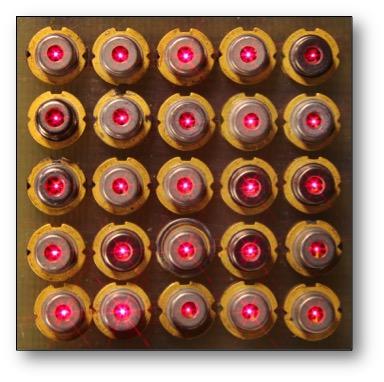Breaking the power and speed limit of VCSELS

Researchers invent a novel VCSEL by combining multiple transverse coupled cavities
Researchers at the George Washington University have developed a new design of VCSEL that demonstrates record-fast temporal bandwidth. This was possible by combining multiple transverse coupled cavities, which enhances optical feedback of the laser. VCSELs have emerged as a vital approach for realising energy-efficient and high-speed optical interconnects in data centres and supercomputers.
Direct modulation of VCSELs cannot exceed about 30 GHz due to nonlinear optical amplification effects known as gain relaxation oscillations. This invention introduces a revolutionary novel VCSEL design. Since feedback inside the laser needs to be carefully managed, researchers introduced a multi-feedback approach by combining multiple coupled cavities.
This allowed them to strengthen the feedback known as 'slow-light' thus extending the temporal laser bandwidth (speed) beyond the known limit of the relaxation oscillation frequency. The innovation is ground-breaking because the direct feedback from each cavity only needs to be moderate and can be controlled precisely via the coupled cavities, allowing for a higher degree of design freedom. Following this coupled cavity scheme, a resulting modulation bandwidth in the 100 GHz range is expected.
"Here we introduce a paradigm-shift in laser design. We utilise a novel coupled cavities approach to carefully control the feedback to the laser achieved by significantly slowing the laser light down. This coupled cavity approach adds a new degree of freedom for laser design, with opportunities in both fundamental science and technology," said Volker Sorger, associate professor of electrical and computer engineering at the George Washington University.
"This invention is timely since demand for data services is growing rapidly and moving towards next generation communication networks such as 6G, but also in automotive as proximity sensor or smart phone's face ID. Furthermore, the coupled cavity system paves a way for emerging applications in quantum information processors such as coherent Ising machines."
'Hexagonal Transverse Coupled Cavity VCSEL Redefining the High-Speed Lasers' by Elham Heidari et al; Nanophotonics October 15th 2020


































